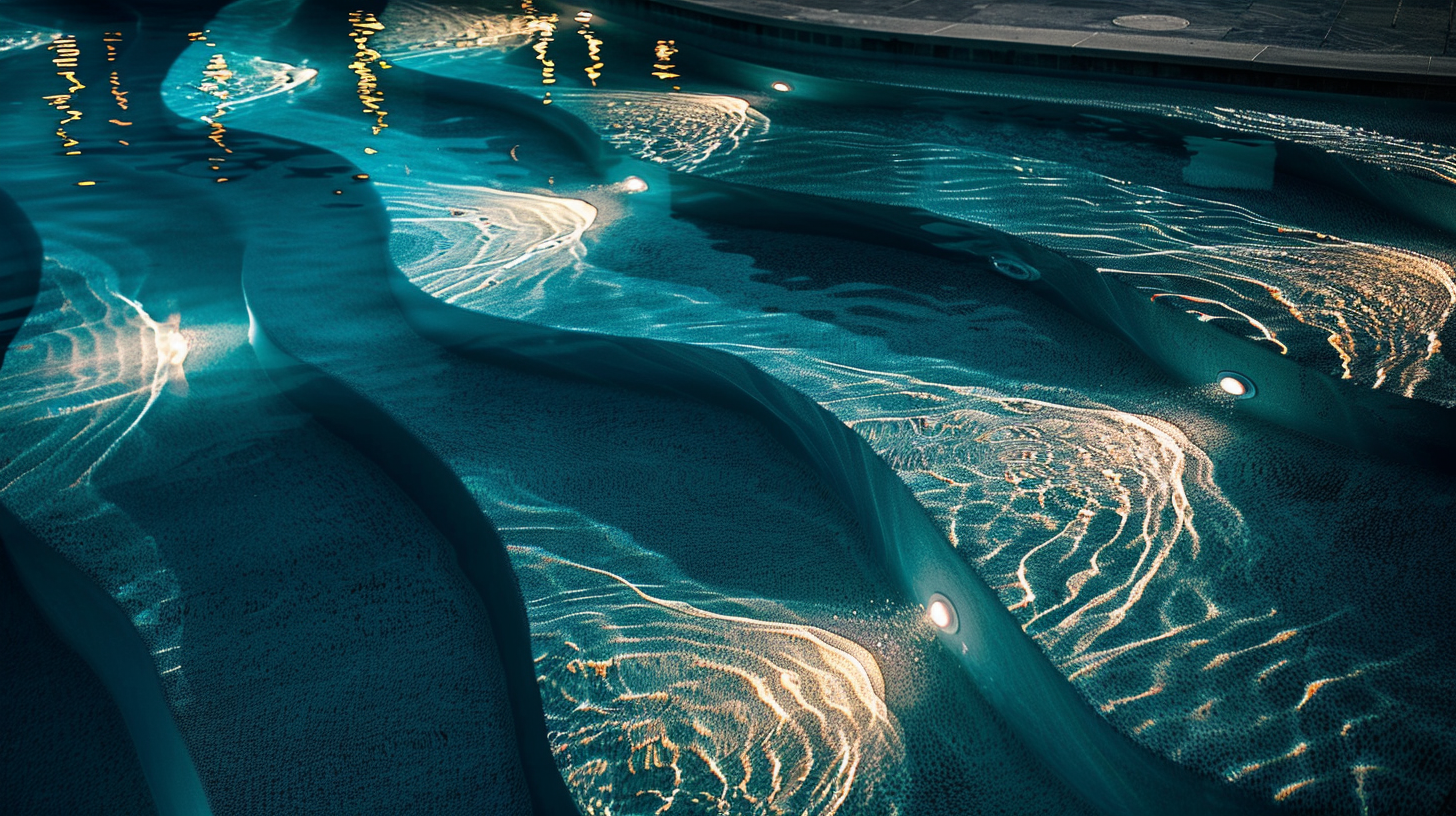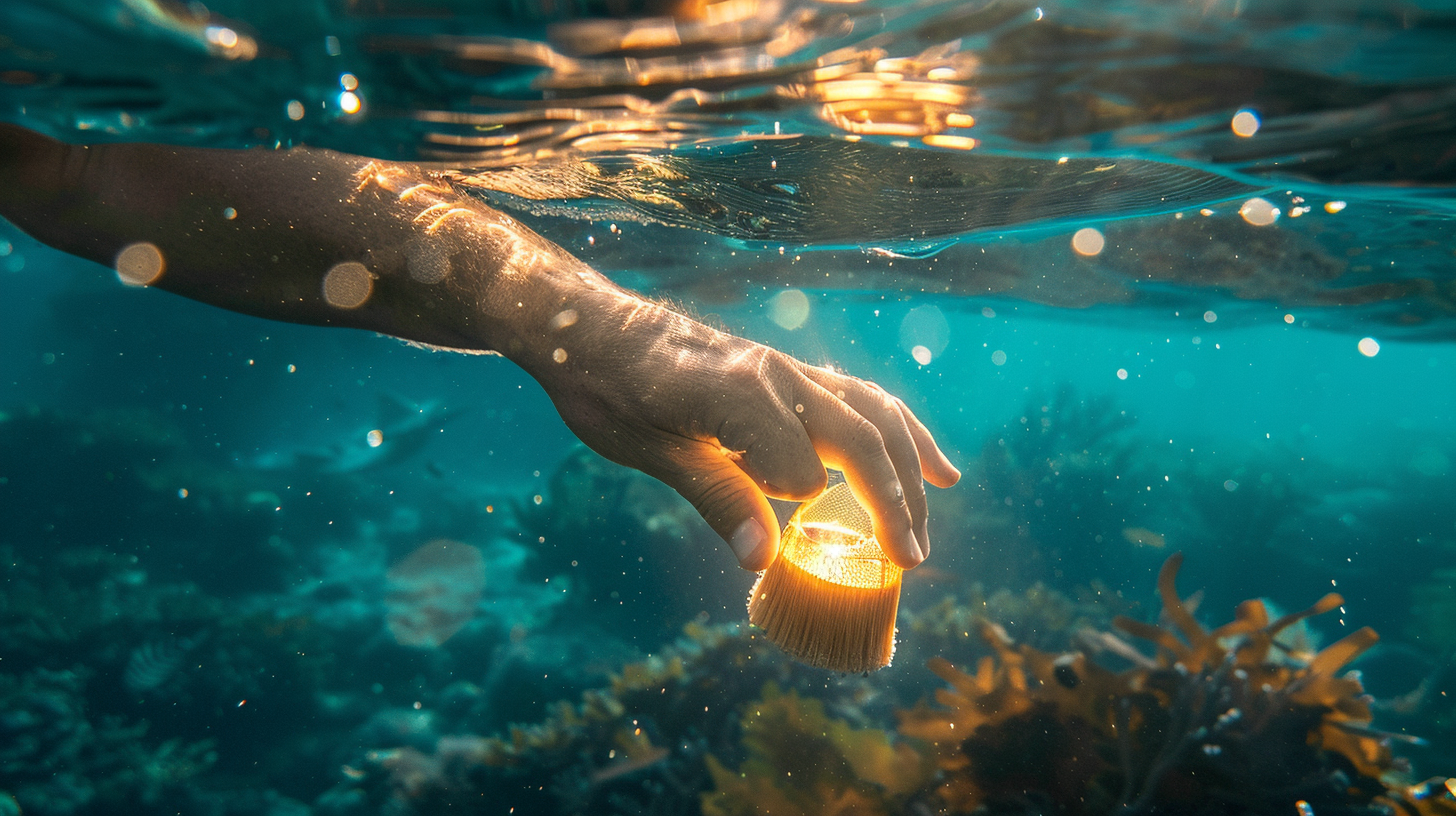Using underwater pool lights to highlight water features
To make the most of your pool’s unique shape and layout, focusing on the natural contours can truly bring your swimming area to life. By strategically placing underwater pool lights, you can highlight the gentle curves and dramatic angles that make your pool distinct. Imagine the serene effect of soft, shimmering lights tracing the winding curves of a lagoon-style pool or accentuating the bold lines of a geometric design. This technique not only adds a touch of elegance but also enhances the overall ambiance, making nighttime swims or evening gatherings more enchanting. In addition to enhancing visual appeal, well-placed lighting can also improve safety by illuminating edges and steps, making them easier to navigate in low-light conditions. Whether you have a freeform pool with flowing lines or a modern pool with sharp, clear-cut angles, using lights to accentuate these features can transform your pool into a mesmerizing nighttime focal point.
Choosing the right lights
Choosing the right pool lights is crucial to maximizing the aesthetic and functional benefits of your underwater illumination project. The first step is to decide on the type of lighting that best suits your pool’s design and your personal preferences. There are several options to consider, including LED lights, halogen lights, and fiber optic lights. LED lights are highly popular due to their energy efficiency and long lifespan. They offer a wide range of colors and can even be programmed for dynamic lighting effects, such as gradual color changes or pulsating patterns. This versatility makes them an excellent choice for highlighting water features like waterfalls or fountains, creating a captivating, ever-changing display.
Halogen lights, while not as energy-efficient as LEDs, offer a bright and warm glow that can be perfect for certain aesthetic applications. They are typically less expensive upfront but may need to be replaced more frequently. Fiber optic lights, on the other hand, use a remote light source to transmit light through cables, which is a great option if you want to keep electrical components away from the water. These lights are especially safe and can be used to create starry sky effects on the pool floor or soft, ambient lighting around the perimeter.
Once you’ve decided on the type of light, consider the placement and the number of lights needed. For instance, strategically placing lights around the pool can create a balanced and evenly-lit environment. If your goal is to highlight specific water features, place lights at varying distances and angles to create the desired effect. Remember that underwater lights should not be too bright as this can cause glare and diminish the relaxing atmosphere you’re aiming to create.
Don’t forget to look into lights with customizable settings. Many modern pool lights come with remote controls or can be managed via smartphone apps, allowing you to easily adjust brightness, color, and lighting patterns to suit the mood of any gathering. With the right selection and placement of pool lights, you can transform any swimming area into a stunning nighttime oasis, perfectly highlighting the unique features of your water landscape.
Installation tips and safety precautions
When it comes to installing underwater pool lights, it’s essential to follow best practices to ensure both safety and effectiveness. First and foremost, always check the manufacturer’s instructions before starting the installation process. These guidelines will provide crucial information about the installation procedures and safety precautions specific to your chosen lights. Ignoring these details could lead to suboptimal performance or even hazardous situations.
Begin by planning the layout of your pool lights. Sketch out where you want to place each light to highlight your pool’s water features and natural contours effectively. This planning stage can help you determine the exact number of lights you’ll need and where each one should go to achieve balanced lighting. If you’re highlighting specific areas like waterfalls, steps, or edges, make sure to position the lights to accentuate these features without causing glare that might detract from the overall ambiance.
Once your layout is planned, proceed with caution by turning off all power sources connected to the pool area before beginning any electrical work. This step is non-negotiable for your safety and should never be overlooked. Additionally, use waterproof and weather-resistant materials for all electrical connections to prevent damage and potential hazards. Consulting a professional electrician experienced with pool lighting installations can be a wise investment to ensure everything is set up correctly and safely.
When it’s time to power up your newly installed pool lights, be mindful of potential electrical load. Overloading your system can lead to failures or even more serious electrical issues. Modern pool lights, particularly LED options, are designed to be energy-efficient, but it’s still vital to ensure your existing electrical setup can handle the added energy consumption.
Regular maintenance is a key aspect often overlooked after the installation of pool lights. Periodically check the lights and electrical connections for signs of wear or damage, especially after extreme weather conditions. Clean the lenses of your underwater lights to maintain their brightness and clarity. Algae and other debris can accumulate over time, dimming the lights and reducing their effectiveness. A simple wipe-down during routine pool maintenance can go a long way in preserving the dazzling effects of your illuminated water features.
Lastly, always be cautious about combining electricity and water. Even with waterproof equipment, there’s always a risk when dealing with electrical installations near water. Use ground-fault circuit interrupters (GFCIs) to add an extra layer of safety to your pool lighting system. These devices are designed to cut off electrical power in the event of a fault, significantly reducing the risk of electrical shock.
By following these tips and precautions, you can enjoy the aesthetic and functional benefits of your pool lights, enhancing your water features while maintaining a safe and stunning swimming environment.
Energy efficiency and maintenance
Energy efficiency is a significant consideration when installing underwater pool lights. LED lights are the most energy-efficient option available on the market today. They consume significantly less electricity compared to traditional halogen lights, making them an environmentally friendly choice. Given their lower power consumption, LED lights not only help reduce energy bills but also have a longer lifespan, typically ranging between 25,000 to 50,000 hours. This extended longevity means fewer replacements and reduced maintenance costs over time.
To further enhance energy efficiency, look for underwater pool lights that offer dimmable options. Having the ability to adjust the brightness means you can lower the light intensity during times when full brightness is not necessary, such as during a quiet evening swim or when the pool is not in use. Dimmable lights provide the flexibility to create different moods while conserving energy. Smart lighting systems can also be a wise choice as they often come with automation features, such as scheduled on/off times and adaptive brightness based on ambient light conditions.
Regular maintenance of your underwater pool lights is crucial to ensure they continue to perform optimally and remain energy efficient. Start by checking the alignment and condition of the lights periodically. Over time, pool water, algae, and debris can affect the performance of your pool lights. Clean the lenses using a non-abrasive cloth and a gentle cleaner to remove any buildup that may hinder light output. This simple step can significantly enhance the brightness and efficiency of your lights.
Aside from cleaning, inspect the light housings for any signs of wear or water intrusion. Any cracks or damages to the waterproof seals can lead to short circuits or reduced lifespan of the lights. If you notice any issues, it’s best to address them immediately to prevent larger problems down the line. Replacing faulty seals or damaged housings can often be done with minimal effort and cost but will save you from more significant repairs or replacements in the future.
| Maintenance Task | Frequency | Tip |
|---|---|---|
| Clean lenses | Monthly | Use a non-abrasive cloth and gentle cleaner |
| Check light housings | Every 3 months | Inspect for cracks or water intrusion |
| Replace seals | As needed | Address immediately to prevent water damage |
| Monitor electrical connections | Annually | Ensure connections are secure and free of corrosion |
Monitoring the electrical connections is another critical aspect of maintaining energy efficiency and safety. Over time, moisture can corrode electrical components, even those designed for underwater use. Check all connections annually to ensure they are secure and free of corrosion. Using waterproof wire connectors and ensuring that all connections are above the waterline can also prevent potential issues.
Taking these proactive steps can significantly extend the life of your pool lights and ensure they operate efficiently. By focusing on energy-efficient choices and diligent maintenance, you can not only highlight your pool’s water features beautifully but also keep operating costs low, creating a stunning, sustainable, and safe nighttime haven.
Creative lighting ideas and inspirations
When it comes to blending creativity with functionality, the possibilities with underwater pool lights are nearly endless. Picture a cascading waterfall transformed into a sparkling curtain of light, or a serene grotto turned into a magical, glowing hideaway. One exciting idea is to use color-changing LED lights to create dynamic lighting scenes that can shift the ambiance based on the occasion. For instance, set the lights to a calming blue for a tranquil evening swim, or ramp up the energy by shifting to vibrant reds and greens for a poolside party.
Another creative concept involves using underwater spotlights to draw attention to specific water features like fountains or sculptures. Positioning lights directly beneath these features can produce dramatic upward illumination, giving them an ethereal quality, almost as if they are floating above a pool of light. Alternatively, installing lights within the body of a fountain can create captivating light and water interplay, enhancing the overall visual impact.
For those looking to tell a story with their pool lights, consider themed lighting setups. If your pool area has a tropical theme, using a mix of green and blue lights can simulate the look of an exotic lagoon. For a more elegant, classic look, soft white or warm yellow lights can cast a luxurious glow, turning your backyard into an opulent retreat.
Themed lighting isn’t limited to colors alone; patterned lights can also add a unique touch to your pool. Fiber optic lights are particularly versatile for this purpose. These lights can be embedded in the pool floor or walls to create starry night effects or intricate designs that are only visible when the lights are turned on. Imagine looking down at your pool and seeing a constellation of stars or a beautiful mosaic appear beneath the water’s surface – such dramatic elements make for memorable gatherings and can serve as great conversation starters.
To highlight the natural contours and unique architecture of your pool, consider using LED strips or rope lights along the edges and steps. These flexible lights can follow the curved lines of a freeform pool or the sharp angles of a geometric design, emphasizing the pool’s shape even after dark. This not only enhances the aesthetic but also improves safety by making these areas more visible at night.
An often-overlooked idea is to incorporate lighting into water features that are not traditionally part of the pool, such as adjacent landscaping or garden elements. Imagine a garden path lit by small, submerged lights that spill into a pool or a nearby pond glowing with underwater illumination that complements the main pool area. This harmonizes the entire outdoor space, creating a cohesive and inviting environment.
Interactive lighting systems are another innovative approach that can elevate your pool experience. These systems allow for real-time control over lighting effects, enabling you to synchronize light changes with music or movement in the pool. Imagine hosting a pool party where the lights pulse in time with the beat of the music or change when someone dives into the water. This can add a dynamic and enjoyable element, making every swim an event.
To truly make your pool area stand out, you can integrate lights with other water features such as jets and bubblers. When illuminated, water jets can create arcs of light that dance across the pool’s surface, while bubblers can create effervescent pockets of light that rise from the bottom, resembling tiny underwater fireworks. These effects can be mesmerizing and add a playful, glamorous touch to the overall design.
No matter which creative lighting ideas you choose to implement, the key is to experiment and discover what works best for your unique pool setup and personal style. By using underwater pool lights to their fullest potential, you can transform your pool into a captivating oasis that not only highlights water features but also becomes the centerpiece of your outdoor living space.


